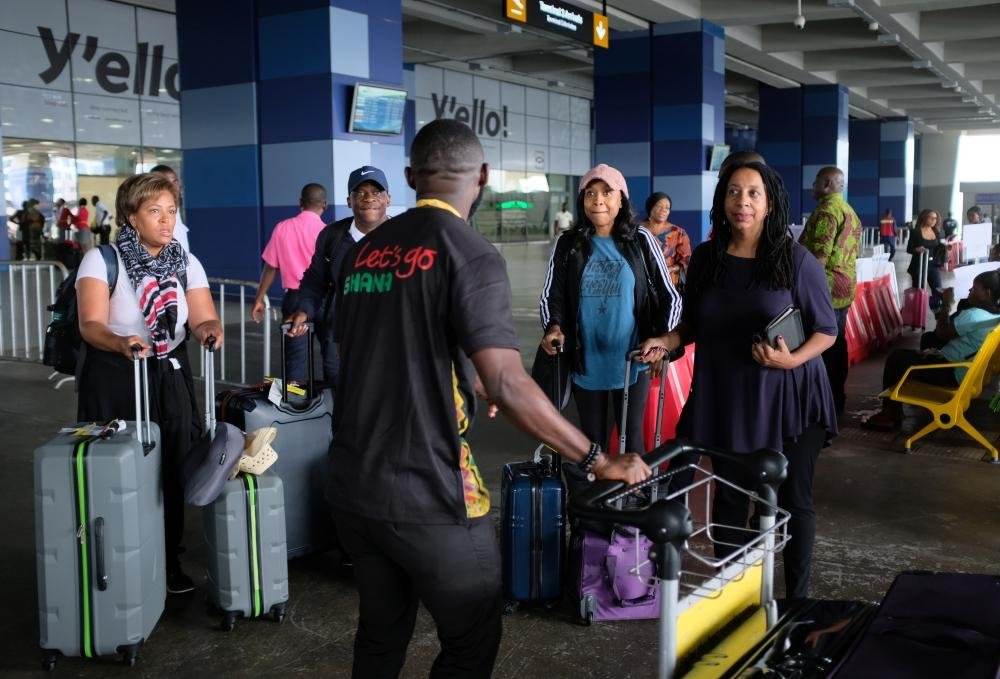Features
DIABETES AND COVID-19
It came from a student in health care training. I have diabetes increases the severity of COVID-19. I have a strong family history of diabetes. Kindly throw more light on the subject. In responding to this, I found a fine paper by Singh et al titled “Diabetes in COVID-19: Prevalence, pathophysiology, prognosis and practicalConsiderations and published in Diabetes& Metabolic Syndrome: Clinical Research & Reviews (2020).
The disease burden of coronavirus infectious disease 2019 (COVID-19) caused by
Severe Acute Respiratory Syndrome Coronavirus-2 (SARS CoV-2) has been
Increasing continuously with more than five million confirmed patients and more than 350,000 deaths globally. With a high prevalence of diabetes, it is important to
understand the special aspects of COVID-19 infection in people with diabetes.
This becomes even more important, as most parts of the world introduced
restrictions on mobility of patients in order to contain the pandemic even though they are being eased in some countries.
Diabetes and associated complications can increase the risk of morbidity and
mortality during acute infections due to suppressed immune
functions. The levels of glycated haemoglobin (HbA1c) greater than 9% have been linked to a60% increased risk of hospitalization and pneumonia-related severity duringbacterial infection. Past viral pandemics have witnessed the association of
diabetes to increased morbidity and mortality. Diabetes was considered as
independent risk factor for complications and death during 2002-2003 outbreak of
Severe Acute Respiratory Syndrome (SARS-CoV-1). Similarly, the presence
of diabetes tripled the risk of hospitalization and quadrupled the risk of intensive
care unit (ICU) admission during Influenza A (H1N1) infection outbreak in 2009.During the 2012 outbreak of Middle East Respiratory Syndrome Coronavirus
(MERS-CoV), diabetes was prevalent in nearly 50% of population. Mortality rate in patients with MERSwho had diabetes was 35%.
Emerging data suggests that COVID-19 is common in patients with diabetes,hypertension, and cardiovascular disease (CVD). Evolving data also suggest that patients of COVID-19 with diabetes are more oftenassociated with severe or critical disease varying from 14-32% in different studies. SARS CoV-2, like SARS CoV utilises angiotensin converting enzyme 2 (ACE-2) as receptor for entry into cell.ACE2 is expressed not only in the type I and II alveolar epithelial cells in the lungsand upper respiratory tract, but also several other locations like heart, endothelium,renal tubular epithelium, intestinal epithelium, and pancreas.
S-glycoprotein on thesurface of SARS CoV2 binds to ACE-2 and causes conformational changes in the ACE-2 receptors are expressed in pancreatic islets. Infection with SARSCoV has been seen to cause hyperglycaemia in people without pre-existingdiabetes.
Hyperglycaemia was seen to persist for 3 years after recovery fromSARS indicating a transient damage to beta cells.
Metformin, a common medication used in diabetes, was significantly
associated with a decreased risk of mortality in patients with chronic lower
respiratory diseases. In a study of 4321 patients with a follow up of 2-
year period, metformin users had a significantly lower risk ofdeath compared with non-metformin users. Patients with coexistent chronic obstructive pulmonary disease and diabetes.
Glycaemic control is important in any patient who has COVID-19. Though data is still evolving, data from other infections like SARS and influenza H1N1
has shown that patients with poor glycaemic control have increased risk of
complications and death. Most patients with mild infection and with
normal oral intake can continue the usual antihyperglycaemic medications.
However, it is advisable to discontinue sodium glucose transporters (SGLT-2) inhibitors because of the risk ofdehydration and euglycaemic ketosis. Metformin may also need to be stopped ifthere is vomiting or poor oral intake. Doses of other antihyperglycemic drugs likesulfonylureas and insulin may have to be altered depending upon the blood glucoselevels.
Blood glucose monitoring poses a special challenge in COVID-19 as it necessitates frequentvisits to patient’s bedside, especially if the patient is critically ill and receiving insulin.
There are several studies about the protective effect of statins in pneumonia.
Statins are known to increase ACE-2 levels and may protect against viral entry of
SARS CoV2. Also, statins are known to inhibit Nuclear factor kappa B
(NFκB) activation and might help in blunting the cytokine storm- a causative factor in COVID-19 complications.
Calcium channel blockers (CCB) have been shown to reduce severity of disease
and mortality in patients with pneumonia, presumably by inhibiting calcium influx
into the cell. It is therefore safe to continue these drugs for control of blood pressurein hypertensive patients. Since CCB has no effect on ACE2 expression, someresearchers have proposed its preferable use in patients with COVID-19 and
hypertension.
So to recap high prevalence of diabetes is seen in patients with SARS-CoV-2 (COVID-19)and the presence of diabetes is a determinant of severity and mortality. Diabetes might facilitate infection by COVID-19 due to increased viral entryinto cell and impaired immune response.Blood glucose control is important for all patients who have diabetes andCOVID-19 infection.Telemedicine can be very useful for the management of patients with diabetes inpresent times with limited access to healthcare facilities.
Once again, make sure you regularly/daily consume polyphenol-rich cocoa to among others reduce your blood glucose, reduce your blood pressure and strengthen your immune system.
DR. EDWARD O. AMPORFUL
CHIEF PHARMACIST
COCOA CLINIC
Features
Tears of Ghanaman, home and abroad

The typical native of Sikaman is by nature a hospitable creature, a social animal with a big heart, a soul full of the milk of earthly goodness, and a spirit too loving for its own comfort.

Ghanaman hosts a foreign pal and he spends a fortune to make him very happy and comfortable-good food, clean booze, excellent accommodation and a woman for the night.
Sometimes the pal leaves without saying a “thank you but Ghanaman is not offended. He’d host another idiot even more splendidly. His nature is warm, his spirit benevolent. That is the typical Ghanaian and no wonder that many African-Americans say, “If you haven’t visited Ghana. Then you’ve not come to Africa.
You can even enter the country without a passport and a visa and you’ll be welcomed with a pot of palm wine.
If Ghanaman wants to go abroad, especially to an European country or the United States, it is often after an ordeal.
He has to doze in a queue at dawn at the embassy for days and if he is lucky to get through to being interviewed, he is confronted by someone who claims he or she has the power of discerning truth from lie.
In short Ghanaman must undergo a lie-detector test and has to answer questions that are either nonsensical or have no relevance to the trip at hand. When Joseph Kwame Korkorti wanted a visa to an European country, the attache studied Korkorti’s nose for a while and pronounced judgment.
“The way I see you, you won’t return to Ghana if I allow you to go. Korkorti nearly dislocated her jaw; Kwasiasem akwaakwa. In any case what had Korkorti’s nose got to do with the trip?
If Ghanaman, after several attempts, manages to get the visa and lands in the whiteman’s land, he is seen as another monkey uptown, a new arrival of a degenerate ape coming to invade civilized society. He is sneered at, mocked at and avoided like a plague. Some landlords abroad will not hire their rooms to blacks because they feel their presence in itself is bad business.
When a Sikaman publisher landed overseas and was riding in a public bus, an urchin who had the impudence and notoriety of a dead cockroach told his colleagues he was sure the black man had a tail which he was hiding in his pair of trousers. He didn’t end there. He said he was in fact going to pull out the tail for everyone to see.
True to his word he went and put his hand into the backside of the bewildered publisher, intent on grabbing his imaginary tail and pulling it out. It took a lot of patience on the part of the publisher to avert murder. He practically pinned the white miscreant on the floor by the neck and only let go when others intervene. Next time too…
The way we treat our foreign guests in comparison with the way they treat us is polar contrasting-two disparate extremes, one totally incomparable to the other. They hound us for immigration papers, deport us for overstaying and skinheads either target homes to perpetrate mayhem or attack black immigrants to gratify their racial madness
When these same people come here we accept them even more hospitably than our own kin. They enter without visas, overstay, impregnate our women and run away.
About half of foreigners in this country do not have valid resident permits and was not a bother until recently when fire was put under the buttocks of the Immigration Service
In fact, until recently I never knew Sikaman had an Immigration Service. The problem is that although their staff look resplendent in their green outfit, you never really see them anywhere. You’d think they are hidden from the public eye.
The first time I saw a group of them walking somewhere, I nearly mistook them for some sixth-form going to the library. Their ladies are pretty though.
So after all, Sikaman has an Immigration Service which I hear is now alert 24 hours a day tracking down illegal aliens and making sure they bound the exit via Kotoka International. A pat on their shoulder.
I am glad the Interior Ministry has also realised that the country has been too slack about who goes out or comes into Sikaman.
Now the Ministry has warned foreigners not to take the country’s commitment to its obligations under the various conditions as a sign of weakness or a source for the abuse of her hospitality.
“Ghana will not tolerate any such abuse,” Nii Okaija Adamafio, the Interior Minister said, baring his teeth and twitching his little moustache. He was inaugurating the Ghana Refugee and Immigration Service Boards.
He said some foreigners come in as tourists, investors, consultants, skilled workers or refugees. Others come as ‘charlatans, adventurers or plain criminals. “
Yes, there are many criminals among them. Our courts have tried a good number of them for fraud and misconduct.
It is time we welcome only those who would come and invest or tour and go back peacefully and not those whose criminal intentions are well-hidden but get exposed in due course of time.
This article was first published on Saturday March 14, 1998
Join our WhatsApp Channel now!
https://whatsapp.com/channel/0029VbBElzjInlqHhl1aTU27
Features
Decisions have consequences
In this world, it is always important to recognise that every action or decision taken, has consequences.
It can result in something good or bad, depending on the quality of the decision, that is, the factors that were taken into account in the decision making.
The problem with a bad decision is that, in some instances, there is no opportunity to correct the result even though you have regretted the decision, which resulted in the unpleasant outcome.
This is what a friend of mine refers to as having regretted an unregretable regret. After church last Sunday, I was watching a programme on TV and a young lady was sharing with the host, how a bad decision she took, had affected her life immensely and adversely.
She narrated how she met a Caucasian and she got married to him. The white man arranged for her to join him after the marriage and processes were initiated for her to join her husband in UK. It took a while for the requisite documentation to be procured and during this period, she took a decision that has haunted her till date.
According to her narration, she met a man, a Ghanaian, who she started dating, even though she was a married woman.
After a while her documents were ready and so she left to join her husband abroad without breaking off the unholy relationship with the man from Ghana.
After she got to UK, this man from Ghana, kept pressuring her to leave the white man and return to him in Ghana. The white man at some point became a bit suspicious and asked about who she has been talking on the phone with for long spells, and she lied to him that it was her cousin.
Then comes the shocker. After the man from Ghana had sweet talked her continuously for a while, she decided to leave her husband and return to Ghana after only three weeks abroad.
She said, she asked the guy to swear to her that he would take care of both her and her mother and the guy swore to take good care of her and her mother as well as rent a 3-bedroom flat for her. She then took the decision to leave her husband and return to Ghana.
She told her mum that she was returning to Ghana to marry the guy in Ghana. According to her, her mother vigorously disagreed with her decision and wept.
She further added that her mum told her brother and they told her that they were going to tell her husband about her intentions.
According to her, she threatened that if they called her husband to inform him, then she would commit suicide, an idea given to her by the boyfriend in Ghana.
Her mum and brother afraid of what she might do, agreed not to tell her husband. She then told her husband that she was returning to Ghana to attend her Grandmother’s funeral.
The husband could not understand why she wanted to go back to Ghana after only three weeks stay so she had to lie that in their tradition, grandchildren are required to be present when the grandmother dies and is to be buried.
She returned to Ghana; the flat turns into a chamber and hall accommodation, the promise to take care of her mother does not materialise and generally she ends up furnishing the accommodation herself. All the promises given her by her boyfriend, turned out to be just mere words.
A phone the husband gave her, she left behind in UK out of guilty conscience knowing she was never coming back to UK.
Through that phone and social media, the husband found out about his boyfriend and that was the end of her marriage.
Meanwhile, things have gone awry here in Ghana and she had regretted and at a point in her narration, was trying desperately to hold back tears. Decisions indeed have consequences.
NB: ‘CHANGE KOTOKA INTERNATIONAL AIRPORT TO KOFI BAAKO INTERNATIONAL AIRPORT’
Join our WhatsApp Channel now!
https://whatsapp.com/channel/0029VbBElzjInlqHhl1aTU27






